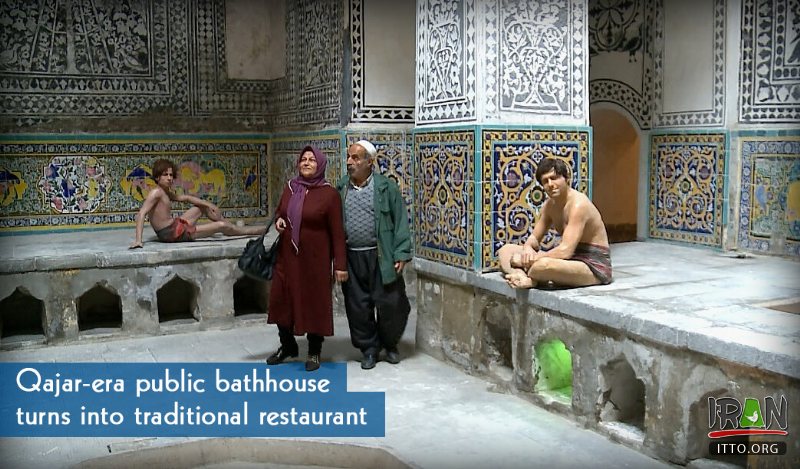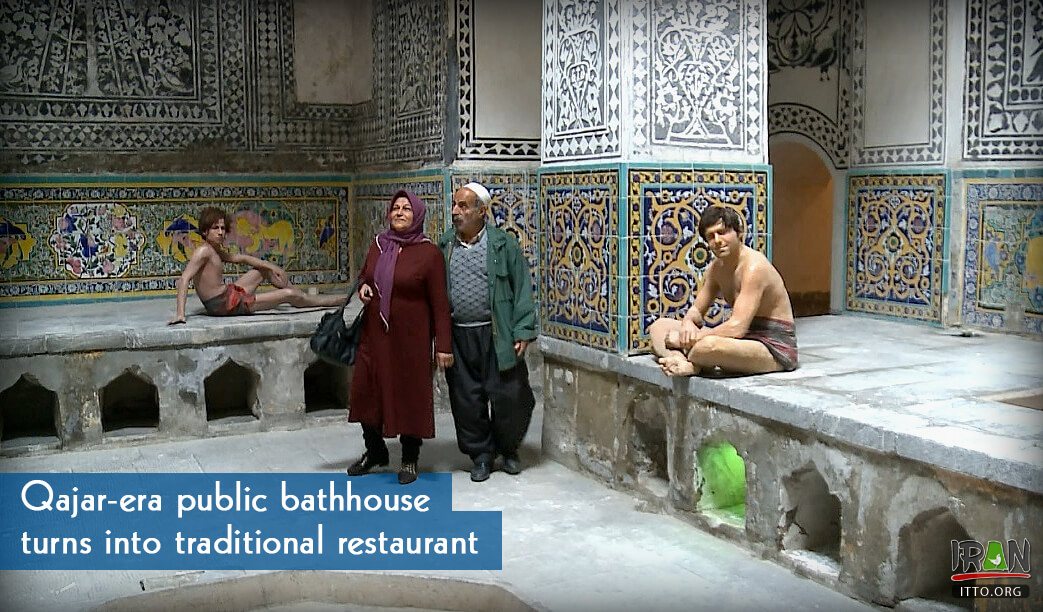A Qajar-era (1789–1925)
public bathhouse in
Sanandaj, western province of Kurdistan, has been repurposed into a traditional restaurant, aimed at achieving higher productivity and better maintenance.
After being abandoned for years, Hammam-e Khan (“Khan Bathhouse”) has undergone some rehabilitation works and is ready to be reopened as a traditional
restaurant, the provincial tourism chief, Yaqub Guylian, said on Monday.
The project, which was fully carried out by the private sector, aims at reviving the historical structure that is one of a kind for its construction method, interior decoration, and size, the official added.
More than 20 job opportunities are expected to be generated by the opening of the traditional restaurant, he explained.
The bathhouse was built in 1805 by the order of the governor of Kordestan, Amanollah Khan Ardalan. The building has very prominent decorations of seven-color tiles with various hunting, animal, plants, and geometric designs.
Such a trend is being practiced during the past couple of years under the close supervision of the Revitalization and Utilization Fund for Historical Places, however, there have been many opponents saying the scheme will not result in better maintenance in some cases. There have been reports that some of the historical monuments have been mistreated by private investors, such as damages caused to the walls, arches, or the lack of proper restoration.
Bathhouses or ‘
hammams’ in Iran were not only places for bathing and cleaning up. They had a social concept for people who gathered at these places weekly.
It was a place where people talked with each other about their daily life and shared humor and news. There are still
bathhouses in Iranian cities but they do not have their social function anymore since most people have bathrooms in their homes due to the modern lifestyle.
Some cities had separate bathhouses for men and women. They were usually built next to each other. However, there were some bathhouses, which were used by men and women at different times of the day.
There were also male and female public bathhouses; at daybreak, a longhorn (booq-e javaz) was blown to announce that the bath was ready. Men came to the baths from daybreak till the afternoon. Women could use the
bathhouses from then to sunset. In some cases, five days were allocated to men and two days to women.
Persian literature is full of proverbs, narrations, and folk stories about
bathhouses, which indicate the importance of the place in the past time.
The name Kordestan (Kurdistan) refers to the region’s principal inhabitants. After the Turkish invasion of Iran in the 11th century CE (Seljuq period), the name Kurdistan was applied to the region comprising the northwestern
Zagros Mountains. It was during the reign of Abbas I the Great of Iran’s
Safavid dynasty (1501–1736) that the Kurds rose to prominence, having been enlisted by Abbas I to help stem the attacks of the marauding Uzbeks from the east in the early 17th century.



